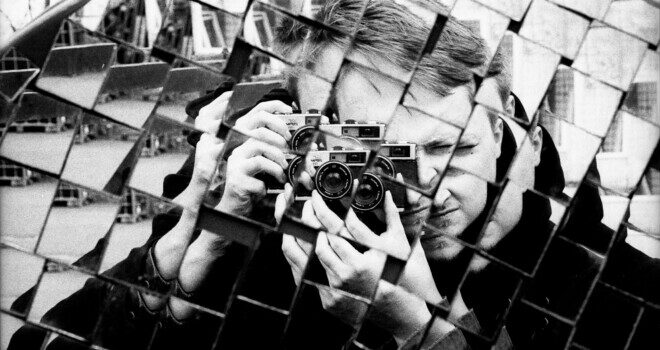There is a popular type of therapy sweeping the country. People are experiencing powerful mental health gains with Internal Family Systems (IFS) which is a “parts work” therapeutic model. Therapists are having such a difficult time getting into the much sought after IFS Institute trainings that they are desperately seeking alternative ways to learn about this revolutionary new approach. Some have turned to online providers such as PESI and others have even sought training outside of the United States.
But is IFS revolutionary? The truth is that “parts work” has been around in therapeutic circles for quite some time. In the 1920’s Austrian psychologist Paul Federn first coined the term “ego states” (parts) and “ego cathexis” (self-energy). In the 1960’s Italian psychiatrist Roberto Assagioli developed psychosynthesis which described our internal world as including an “I” and a “Self” as well as subpersonalities (parts). In the 1960’s and 1970’s Jack and Helen Watkins developed Ego State Therapy which is a more fleshed out parts work approach integrating aspects of psychoanalysis and clinical hypnosis. During roughly that same time, Eric Berne described the dynamic between our parent, child, and adult parts and the corresponding parts of others. In the 1980’s John Bradshaw popularized the notion of the “inner child.”
So, when marriage and family therapist Richard Schwartz first developed IFS in the 1980’s there was already a rich foundation to understand our inner world. But Schwartz did something unique. He made it user friendly for therapist and client alike. He conceived of parts as having several overarching roles: managers, firefighters, and exiles. He focused on resolving inner conflicts (polarizations) among the parts and how the “Self,” the seat of consciousness, could be accessed to bring greater healing and harmony to all the parts of the self-system. His method is powerfully transformational.
What is meant by an “inner world” and “parts” and “internal systems”? The foundational belief is that our personalities are multifaceted. We have within our conscious and unconscious minds a rich and diverse multiplicity. Our inner world operates as an internal system, meaning that within our mind exists many parts with various roles. These parts interact with each other and inform the behavior of the human person. We have parts that manage daily functions for us, parts that socialize, parts that plan, parts that party, parts that choose escapism to avoid negative feelings, parts that are wounded and carrying the burden of past hurts, and so on. These parts have their own feelings, thoughts, and perspectives. When the parts work together well under the leadership of the “Self,” we have internal integration and harmony.
We access these parts by slowing down and “looking” inside, much the way we would if we were meditating. We discover we can connect with our parts and hear their concerns. We can work with our parts and resolve the conflicts between them. We can avoid having parts highjack the system when they are overwhelmed.
This might all sound very strange to someone who is just hearing about this for the first time. I can tell you as a therapist who uses a parts work approach, that most people find it life changing. They discover ways of relating to themselves that bring about greater inner peace. They also discover that they can relate to others in healthier ways. It’s a game changer in my opinion.
But is it Catholic?
This is what I set out to discover and one reason I wrote my book Litanies of the Heart. I had many questions. I knew St. Thomas Aquinas was clear that the soul is a unity. But he also describes parts (or powers or potentialities) of the soul: vegetative, sensitive, appetitive, and intellectual. As I brushed up on my Thomism, I concluded that parts had accidental not substantial form. A person may feel like their parts are separate beings, but they are not. This, however, put me in conflict with what I understood to be Schwartz’s position. He saw parts as separate people and at one point even described parts as having parts. This was going too far in my opinion.
I continued to examine parts work through a biblical lens. The Bible is clear that we have a heart, a spiritual center, which is who we are at a deep and profound level. I began to see in the heart a parallel with the “Self” of IFS. We are created in the image of God (Gen. 1:27). St. Paul described an inmost self (Rom. 7:22) where Christ dwells (Eph. 3:17) and where we can have the mind of Christ (1 Cor. 2:16). I began to see that in most biblical passages the heart refers to this inmost self (although sometimes it refers to something like the IFS notion of the “Self” and the parts), and my working definition for the inmost self became the “conscious center of the soul.”
St. Paul also famously described inner conflicts, “For I do not do the good I want, but the evil I do not want is what I do. Now if I do what I do not want, it is no longer I that do it, but sin that dwells within me” (Rom. 7:19-20). In his Confessions, St. Augustine of Hippo described his “disintegrated self” and an internal fragmentation in need of unity.
St. Maximus the Confessor described Christ as the mediator between heaven and earth. For him the Kingdom of God had both a global reality and a presence deep within each person’s soul. It became clearer to me that within us was a rich and complex God-given diversity which makes each of us a unique person. St. Maximus also talks about the soul as a “workshop” where things are worked out internally. He describes “existential modes” and “divided extremes” which must be brought into unity.
Other Catholic saints could be seen through this lens. St. Teresa of Avila’s description of the soul as an interior castle made up of many mansions took on new meaning. The teachings of more modern spiritual leaders such as Fr. Jacques Phillippe could be seen in this new light when he described “inner freedom.”
But what about IFS and Schwartz? Without a doubt, in the last ten or more years Schwartz has embraced a New Age approach. In his book No Bad Parts, for example, he describes the “Self” as essentially the same substance as a larger “SELF” in the universe. Before long, I realized we needed a Catholic response and a parts work approach that was founded on a Catholic anthropology and supported by the rich spiritual, moral, intellectual, and theological tradition of the Church.
Despite Schwartz’s New Age emphasis, a Catholic parts work approach is indeed possible. Such an approach can include what is good from the psychological tradition going back to Federn and including other insights from this rich history (here I think Ego State Therapy has a lot to offer), as well as the helpful and practical brilliance of the IFS model. There is no question in my mind, IFS is an innovative and effective therapeutic approach—there is no reason to throw out the baby with the bathwater.
So, is IFS New Age? It doesn’t have to be.
Is it divinely inspired? Perhaps not—but it does reflect a profound truth about the human person. I believe parts work, especially if viewed through a Catholic lens, explores a core dimension of the human person, the heart, that provides a way to access one’s inmost self which St. Athanasius refers to as the “mirror of the soul.” It also provides a way to access grace-filled experiences of inner healing as the inmost self with God’s loving presence brings the parts into a place of inner harmony. This frees up the person to love God and others in a more authentic and meaningful way. In the words of St. Ignatius of Antioch, we are to “love one another with an undivided heart.”
Editor’s Note: The author’s book, Litanies of the Heart, is available from Sophia Institute Press.
Photo by Ludomił Sawicki on Unsplash










